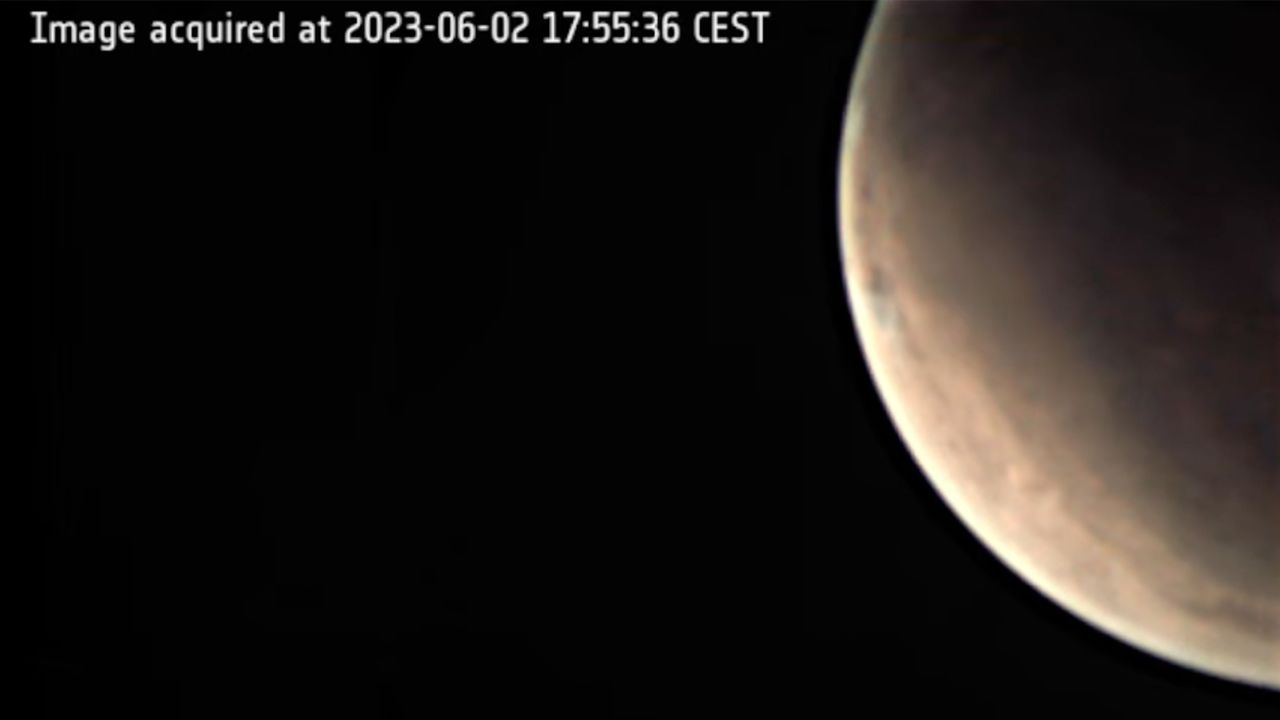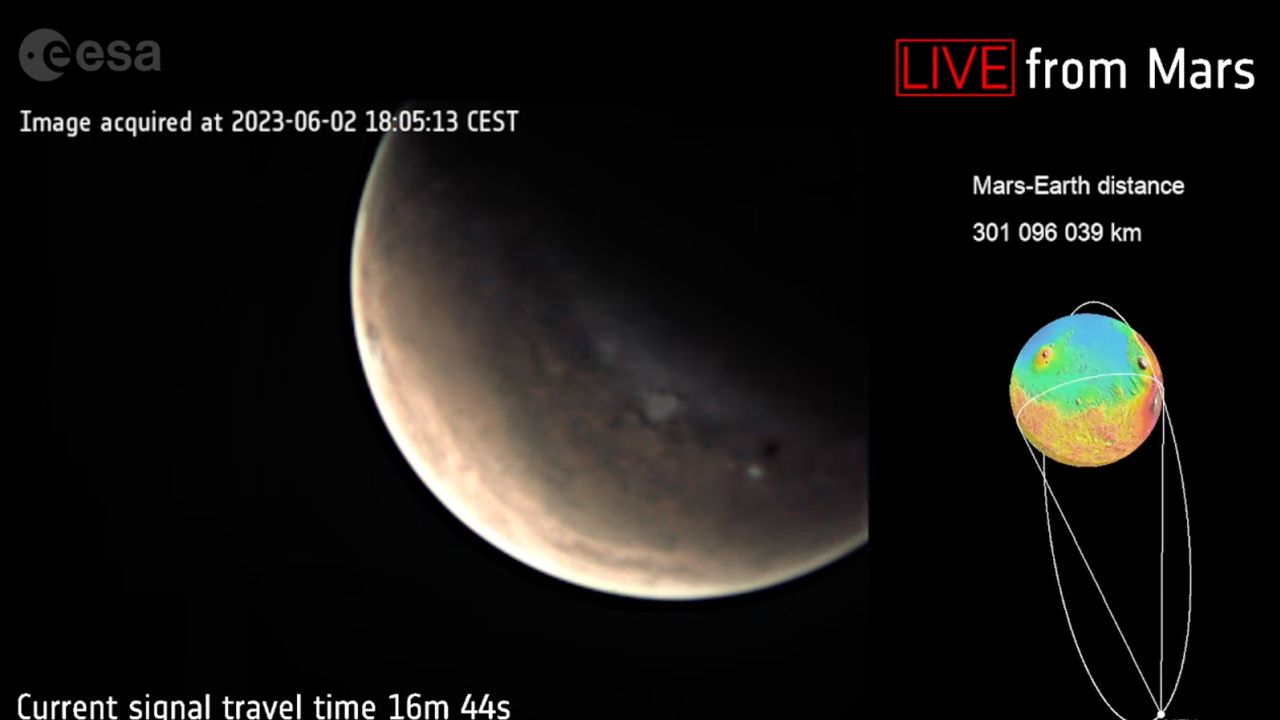Here is Mars in real time.
The European Space Agency is streaming on YouTube the first live images directly from Mars.
Over the course of an hour, new images of Mars are expected about every 50 seconds, according to statement from the agency. Updates will also be available at ESA’s Twitter account and the hashtag #MarsLIVE, the agency said.
The images, shared on YouTube, ESA’s Twitter account and with #MarsLIVE, will show the planet as it has never been seen before, ESA said.
The event is celebrating the 20th anniversary of the launch of the agency’s Mars Express orbiter — a mission to take three-dimensional images of the planet’s surface to see it in more complete detail.
“Normally, we see images from Mars and know that they were taken days before,” said James Godfrey, spacecraft operations manager at ESA’s mission control center in Darmstadt, Germany, in a statement. “I’m excited to see Mars as it is now — as close to a martian ‘now’ as we can possibly get!”
But haven’t we seen images of Mars before? Yes, but not live, the ESA said.
Often data and observations of the red planet are taken when a spacecraft is not in direct contact with Earth, so the images are stored until they can be sent back, ESA said.
Depending on where Mars and Earth are in their orbits around the sun, the messages that journey through space can take anywhere from 3 to 22 minutes.
The ESA estimated it would take about 17 minutes for the light needed to form the images to travel directly from Mars to Earth and then another minute to get through the wires and servers on the ground to get the livestream started, the agency said.

“Note, we’ve never tried anything like this before, so exact travel times for signals on the ground remain a little uncertain,” the agency said in a statement.
No stars were visible in the background of the images because Mars is quite bright, noted Colin Wilson, a project scientist at ESA.
“If you’re very close to it, it is even brighter,” Wilson noted, and that obscures the surrounding stars in this particular angle the spacecraft is snapping images from.
But, if you were on the Mars Express spacecraft, you would be able to see much of the cosmos, Wilson added. “And that is in fact critical to how Mars Express navigates,” he said. The spacecraft uses an on board map and its imaging of the stars to orient itself in space, much the way humans have navigated the oceans going back centuries.
For some time, the transmissions from Mars were interrupted, the ESA scientists noted, as a ground station near Madrid experienced bad weather.

https://ift.tt/QYSkvO2
Science

No comments:
Post a Comment